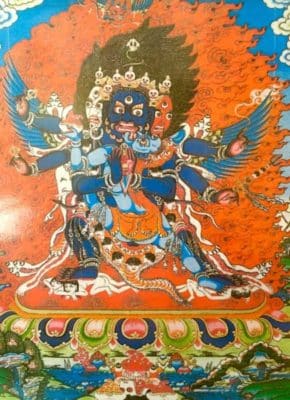Puja



“We are primordially perfect, but we donʼt see it that way. Our Buddha Nature has been obscured. We have so many stories, story after story, with these we cover our true reality and start believing these stories are real. To discover or reveal our Perfect, Ultimate Nature we practice the Sadhana.” Lhoppön Rinpoche, Dakini Day, April 21, 2017
We are blessed at Mipham Shedra to practice three Sadhanas each month under the instruction of Lhoppön Rinpoche. Scheduled according to the Tibetan lunar calendar, on Guru Rinpoche day we perform Rigdzin Dupa, “the inner lama practice from Longchen Nyingtik”; on Dakini Day, Yumka Dechen Gyalmo, “the peaceful dakini practice from the Longchen Nyingtik”; and on the first Saturday of each month Green Tara Puja, “The essence of the Two Accumulations.”
These Sadhanas are a crucial part of the Tibetan Buddhist Deity practice of Creation and Completion, specific to Vajrayana Buddhism. Here in the West, Vajrayana students often take part in visualization practice without full understanding. We are genuinely fortunate at Mipham Shedra for the guidance of our resident Teacher. Rinpoche offers a 30 minute class before each Puja where he patiently explains the essence and purpose of the Sadhana. He allows time for students to ask questions and answers so that we may accomplish the practice. Rinpoche gives us teachings on the nature and specifics of each Deity and instructs us on why we do these practices, the histories of the Deities, his experiences of these practices in the monastery — all of which deepen our connection to the Buddha, Dharma and Sangha. At the completion of the class, the actual Puja begins.
Month after month as we practice the Sadhanas we find our own complex stories begin to soften and fall away. Our view of ourselves and the world around us as ordinary, unworthy, miserly begins to shift and slowly we see that we are full of natural compassion and wisdom. We conclude with the Completion Stage, and all dissolves back to basic Ground, Buddha Nature, from which it arose. Inexpressible!
The Pujas follow a specific and similar format involving prayers and practices to create a sacred space and connect with the deity. These practices are a rich and profound method and we encourage you to come and experience their beauty and Rinpoche’s profound teachings!


Besides the three Pujas which are performed on a monthly basis, two other Pujas are performed at Mipham Shedra. The Shakyamuni Buddha Puja is performed on each of the Four Great Festival Days and the Vajrakilaya Puja is performed several time during Losar ( the Tibetan New Year).